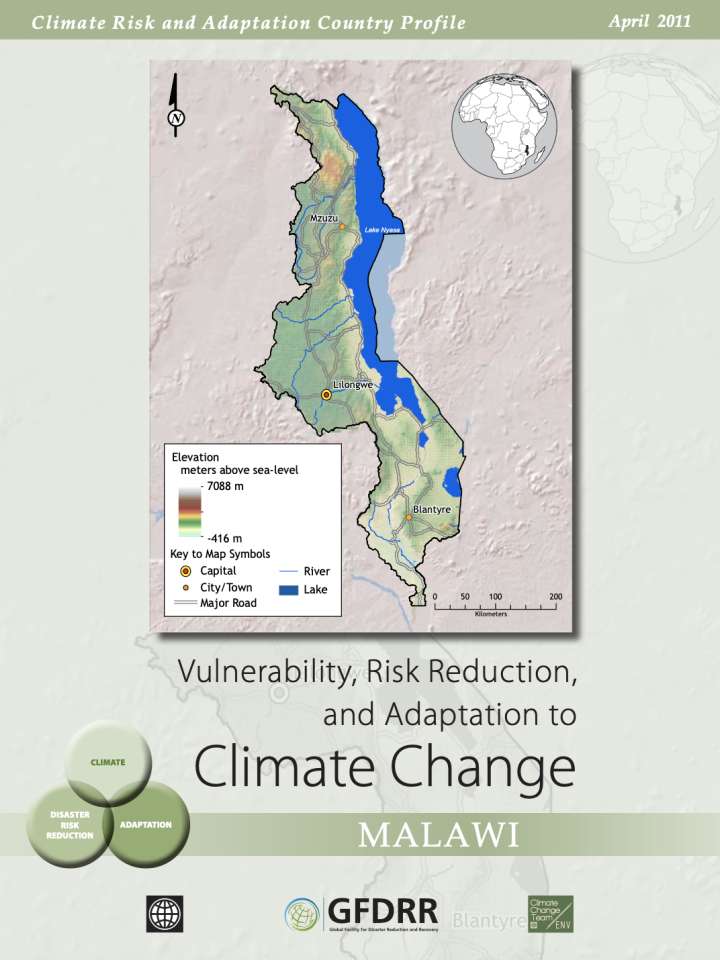Climate risk and adaptation country profile: Vulnerability, risk reduction, and adaptation to climate change: Malawi
This paper profiles the vulnerability, risk reduction, and adaptation to climate change of Malawi. Malawi’s National Adaptation Programme of Action assesses impacts of climate change on the agriculture, water, human health, energy, fisheries, wildlife, and forestry sectors, as well as the implications on gender. The sector that will be most severely impacted by climate change is agriculture. Over 50 percent of the population lives below the poverty line and one in five people is chronically food insecure. Rainfed subsistence agriculture is the main livelihood for 85 percent of the population, leaving them highly vulnerable to weather shocks such as erratic rainfall that can cause flooding in the south, and periodic droughts that affect the entire country. Meeting the development challenge in Malawi requires increasing agricultural productivity, improving irrigation, developing and strengthening input and output markets, improving vital infrastructure service and delivery, and improving the investment climate overall.
The paper identifies the following recent climate trends amoung others in Malawi:
- Mean annual temperature has increased by 0.9°C between 1960 and 2006, an average rate of 0.21°C per decade. This increase in temperature has been most rapid in the rainy summer (December-February) and lowest in the hottest season (September-November).
- Daily temperature observations show significantly increasing trends in the frequency of hot days and nights4 in all seasons.
- As year‐to‐year variability in rainfall is very high in Malawi, long-term trends are difficult to identify. In 2006, wet‐season (December-February) rainfall over Malawi was markedly low, possibly causing a decreasing trend in December-February rainfall; however, evidence does not reveal consistent decreases.
Explore further

